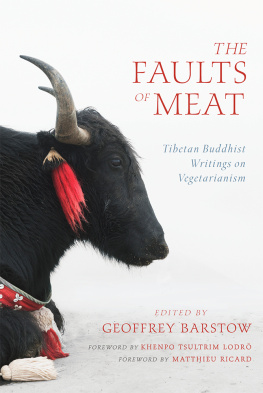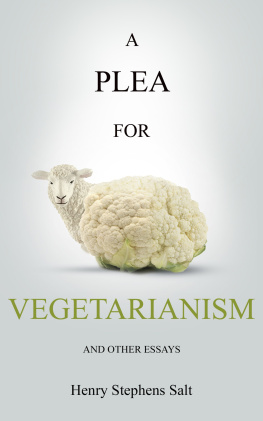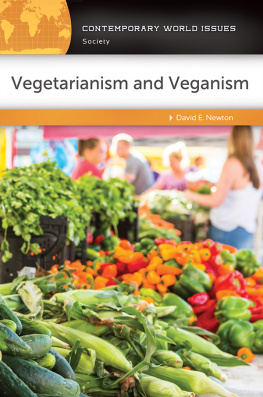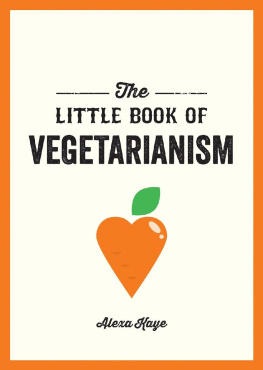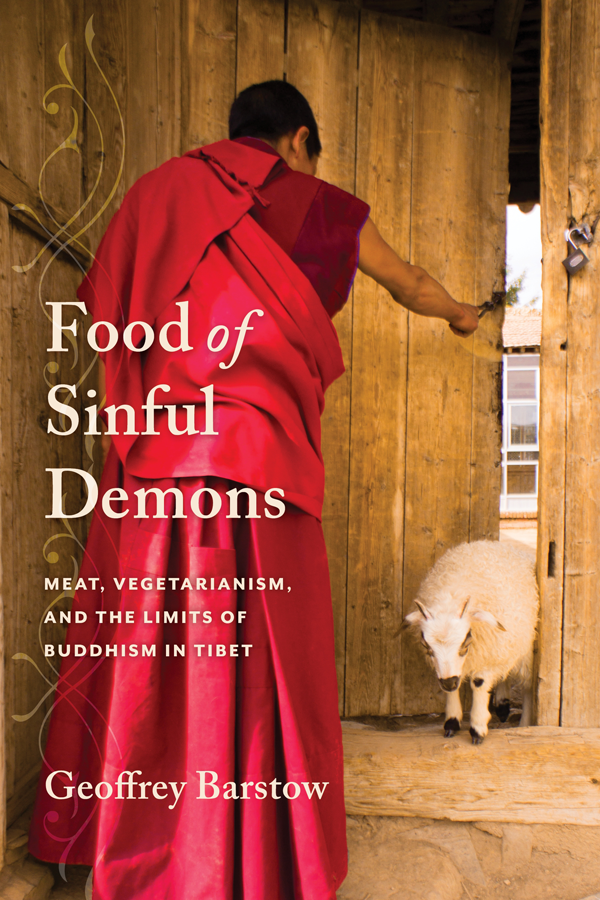Contents
Guide
Pagebreaks of the print version
Food of Sinful Demons
STUDIES OF THE WEATHERHEAD EAST ASIAN INSTITUTE
COLUMBIA UNIVERSITY
STUDIES OF THE WEATHERHEAD EAST ASIAN INSTITUTE, COLUMBIA UNIVERSITY
The Studies of the Weatherhead East Asian Institute of Columbia University were inaugurated in 1962 to bring to a wider public the results of significant new research on modern and contemporary East Asia.
For a selected list of titles, see .
FOOD of SINFUL DEMONS
Meat, Vegetarianism, and the Limits of Buddhism in Tibet
GEOFFREY BARSTOW

COLUMBIA UNIVERSITY PRESS NEW YORK
Columbia University Press
Publishers Since 1893
New YorkChichester, West Sussex
cup.columbia.edu
Copyright 2018 Columbia University Press
All rights reserved
E-ISBN 978-0-231-54230-2
ISBN 978-0-231-17996-6 (cloth : alk.paper)
Cataloging-in-Publication Data is on file at the Library of Congress
A Columbia University Press E-book.
CUP would be pleased to hear about your reading experience with this e-book at .
Cover design: Lisa Hamm
Cover image: Photograph by author
For Meg
Meat is a food of sinful demons.
Nyam Sherab Gyeltsen
Contents
In a work such as this one, it is customary to thank the many people who have assisted in the project over the years. While no academic study is ever completed in a vacuum, this present book is particularly indebted to the kindness of many. Perhaps the most challenging part of this project was the identification of the many Tibetan sources I have relied on. Tibetan literature is vast, and reading even a small fraction of it is categorically impossible. And yet many of the sources quoted in this book are small, passing references to vegetarianism in works otherwise dedicated to an entirely different topic. In order to find them, I have had to rely on the kindness of colleagues, friends, and, often enough, total strangers. I cannot count the number of times I received an email from someone saying, Hi Geoff, I found another reference for you! Without assistance like this, this project would never have gotten off the ground, let alone become the book you now hold in your hands.
It is impossible for me to name every individual who assisted me in this way, but I will do my best, and extend my apologies to anyone I have overlooked. My heartfelt thanks go to (in alphabetical order) Jean-Luc Achard, Achim Bayer, John Bellezza, Katia Buffetrille, Cathy Cantwell, Chatrel Rinpoch, Sherab Chen, Shayne Clarke, Susan Crane, Bryan Cuevas, Catherine Dalton, Dominic Di Zinno, Brandon Dotson, Margaret Ferrigno, Kati Fitzgerald, Gaerrang, Ruth Gamble, Holly Gayley, David Germano, Janet Gyatso, Lauran Hartley, Jrg Heimbel, Sarah Jacoby, Gesh Jampa Samten, Berthe Jansen, Khenpo Karthar Rinpoch, Lama Kunzang Dorjee, Angela Lankford, Manu Lopez, Dan Martin, Charles Manson, Robert Mayer, Khenpo Ngawang Dorj, Isabella Ofner, Chris Otter, Lama Phurbu Tashi, Andrew Quintman, Elizabeth Reynolds, Jim Rheingans, Christy Robinson, Jann Ronis, Kurtis Schaeffer, Michael Sheehy, Nicolas Sihl, Matthew Stephensen, James Stewart, Brenton Sullivan, Tenzin Namdak Rinpoch, Tenzin Wangmo, Antonio Terrone, Gesh Thubten Soepa, Tlku Thondup, Gray Tuttle, Leonard van der Kuijp, Stacey Van Vleet, Jed Verity, Benno Weiner, Chris Wilkinson, Noah Winer, Ben Wood, and Yesh Jigm Gang. I would also like to thank my many Tibetan friends and confidants inside Tibet who contributed their time and energy to this project. I am withholding their names out of concern for their privacy, but I am deeply grateful nonetheless.
This project also depended on the financial support of several institutions. I would like to take this opportunity to thank the Graduate School of Arts and Sciences at the University of Virginia, the Fulbright U.S. Student Program, Otterbein University, and Oregon State University. Without the support of these fellowships and institutions, this project would have ended before it had even begun.
I also wish to extend my thanks to my family. My parents, Linda and David Barstow, have consistently supported my research and academic ambitions. My mother- and father-in-law, Ellen and Robert Young, have likewise been unwavering in their support. I also wish to thank my wife Eliza for her consistent support. It is always difficult juggling the requirements of two academic careers, but this is particularly true when one requires extended travel. Since beginning the PhD program at UVA in 2008, I have spent more than twelve months doing fieldwork in Asia, a time that also corresponded with some of the first years of our daughters life. The travel required by my research has not always made Elizas life easy, and I am profoundly grateful for her willingness to shoulder a sometimes unfair burden. Without her active support, this project would have been impossible. Lastly, I wish to thank my daughter Meg. She has brought more joy into my life than I ever thought possible.
For decades, there was no commonly accepted system for rendering Tibetan terms in Roman letters in a way that was easily pronounceable for the average reader. The system developed by Turrell Wylie accurately reproduced the Tibetan letters themselves, but because Tibetan includes so many silent letters, it was all but incomprehensible to those who do not read Tibetan (to give a particularly egregious example, the word spelled bsgrubs in Wylie transliteration is actually pronounced more like drub ). Fortunately, over the last few years scholars have been rapidly adopting a system of phonetic transliteration developed by the Tibetan and Himalayan Library (THL). The THL system sets aside accurate reproduction of Tibetan spelling in favor of consistently reproducing the pronunciation of these words in modern spoken Tibetan. Throughout this book, I have largely followed THLs guidelines to render Tibetan names and terms. That said, I have departed from the THL system on several occasions. Sometimes this was simply because I felt the THL system did not accurately render Tibetan pronunciation. More frequently, I modified THL spelling because a name or place is already well known with a particular spelling. Thus, I use Jigm Lingpa, rather than Jikm Lingpa, as this eighteenth-century master is already well known and his name is usually spelled with a g instead of a k . Those who are deeply familiar with the THL system may find this disconcerting at times, but my hope is that using well-established spellings in this way will help less-specialized readers find other information on these individuals. For those who read Tibetan, precise spellings for all terms, personal names, and place names can be found in a table that follows the main body of this book. In this table and in the notes, I use the Wylie system to accurately render Tibetan spelling.
This book contains many short translations from Tibetan texts. In almost all cases, the translations provided here are my own, even those for which published English translations already exist. The fact that I use my own translations should not be taken as a suggestion that these previous translations are inadequate. Instead, I simply hope to keep the style and terminology consistent across this work. At the same time, whenever a previous English translation is known to me, I have included a reference (with page numbers) in the note, so that readers may easily find these other renditions and compare them with my own. In the few cases where I did not personally translate a passage, I state this fact in the note.


